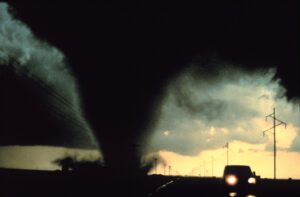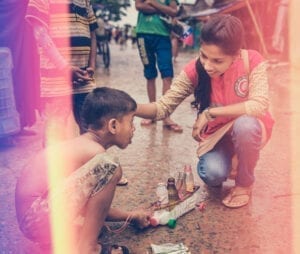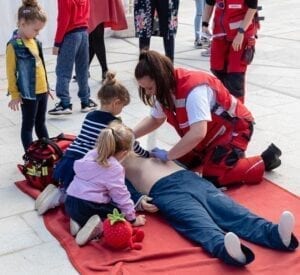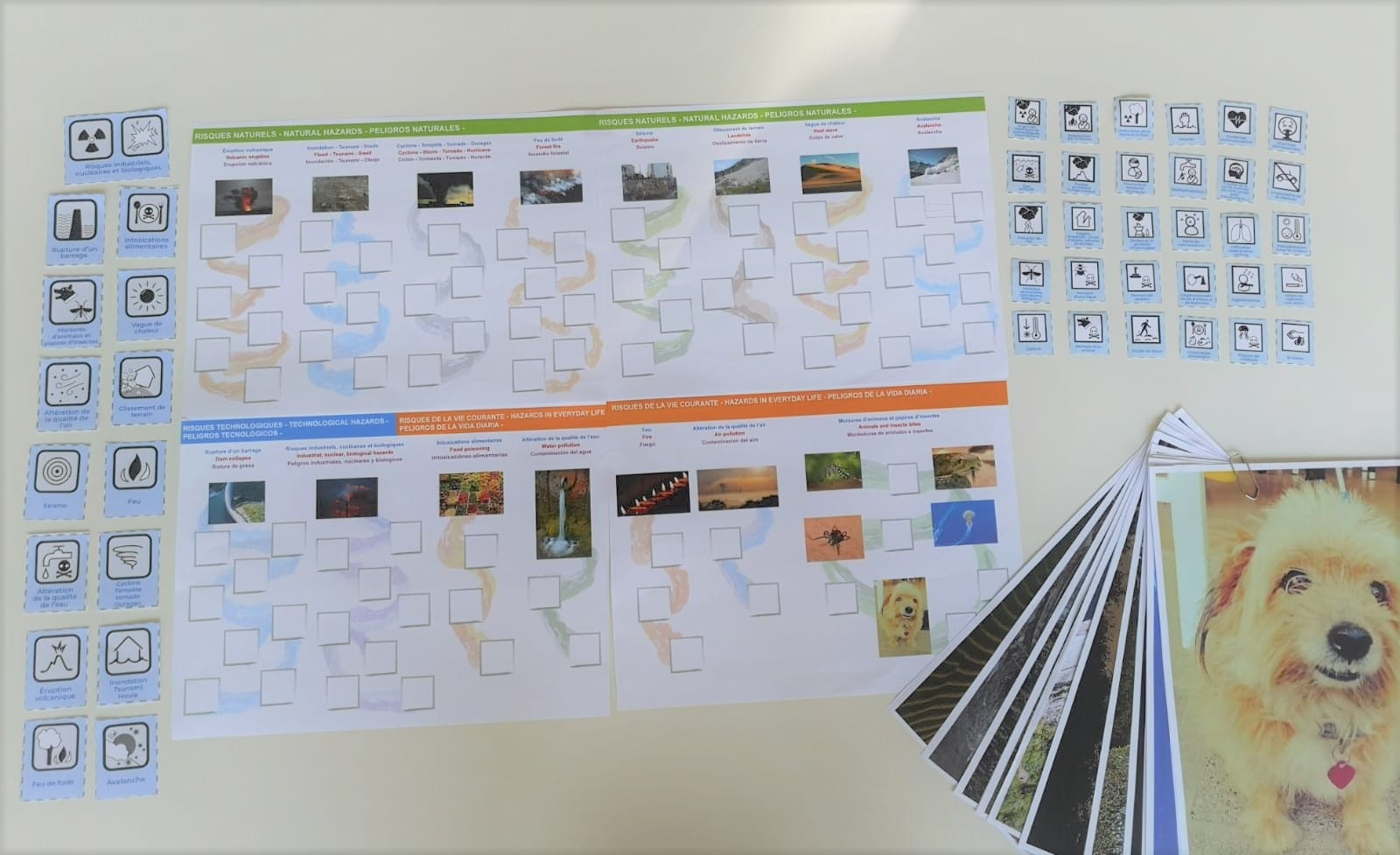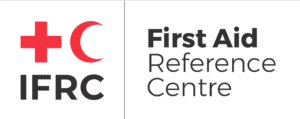
First aid and Disaster Risk Reduction
Did you know that during the past decade 1.7 billion people around the world have been affected by climate and weather related disasters? That’s an average of 170 million people affected each year.
(Figures from the International Federation of Red Cross and Red Crescent Societies)
Disaster risk reduction is the concept and practice of reducing disaster risks through systemic efforts. It therefore encompasses a broad range of activities from ensuring that legislative and policy approaches reflect known hazards, to community-based initiatives and technical solutions such as early warning systems.
The Global First Aid Reference Centre believes that first aid training contributes to a better disaster preparedness and response by and for citizens. That’s why linking both is essential to ensure that communities around the world are resilient.
Natural hazards
In the past 10 years, the number of natural catastrophes linked to global warming has increased by 60%, and one in every two people is at risk of being affected by one.
Technological hazards
Hazards originating from technological or industrial accidents, dangerous procedures, infrastructure failures or specific human activities may cause the loss of life or injury.
Hybrid challenges
Climate change consequences include evolving weather conditions, which can lead to long-term hazards and affect the health of humans and animals in different parts of the world.
Focus on heatwaves
Heatwaves are most acutely felt in cities, where they are not only a pressing challenge today but left unabated will become even deadlier as cities grow and the climate continues to change. However, heatwaves are often left behind in existing early warning systems and other efforts to reduce the impacts of disasters.
First Aid and Disaster Risk Reduction
Home page for Disaster Risk Reduction and First Aid interactive games. Play games and see the helpful links to learn more about first aid!
First aid preparedness
First aid is the immediate assistance provided to an ill or injured person until professional help arrives. It is concerned not only with physical illness or injury but also with other initial care, including psychosocial support for people.
Natural hazards
are naturally occurring physical phenomena caused either by rapid or slow onset events which can be geophysical (earthquakes, landslides, tsunamis and volcanic activity), hydrological (avalanches and floods), climatological (extreme temperatures, drought and wildfires), meteorological (cyclones and storms/wave surges) or biological (disease epidemics and insect/animal plagues).
Technological hazards
Complex emergencies/conflicts, famine, displaced populations, industrial accidents and transport accidents are events that are caused by humans and occur in or close to human settlements. This can include environmental degradation, pollution and accidents.
Hybrid challenges
There are a range of challenges, such as climate change, unplanned – urbanisation, under-development / poverty as well as the threat of pandemics, that will shape humanitarian assistance in the future. These aggravating factors will result in increased frequency, complexity and severity of disasters.
Background, context and how to play - click to open and read
Background
The International Federation of the Red Cross and Red Crescent Societies has been responding for a decade to any type of disaster and providing support to communities when needed. In a constantly changing world, we are now facing more and more cross-sectorial crisis and hazards, increased by global warming and climate change. When a catastrophe happens, citizen of all ages are on the frontline as emergencies services are overwhelmed. That’s why preparedness of the communities shall be on the top of humanitarian agenda and we shall equip people with basic first aid knowledge.
Objectives
This web page demonstrates different types of hazard and gamify situations that may be faced by the public when a disaster occurs. A strong focus has been made on first aid situations (as it’s the main purpose of the Global First Aid Reference Centre).
Contexts for this game
This game can be part of training for disaster risk reduction and/or first aid, to immerse your audience in different situations and make them think about what needs to be done for communities to be resilient and save lives.
- In class at schools
- In leisure centres
- At home (alone or in family)
- For a community awareness session
- Social media promotion (please feel free to share the links to this page!)
How to play
- Work alone or with friends and colleagues.
- Complete all the interactive books (see the games above and press “play”!)
- Let us know your score on any social media by using this hashtag #GFARCDRR (which stands for “Global First Aid Reference Centre Disaster Risk Reduction“!)
- Take the test as many times as you like to get the best score!
- Complete a local Red Cross Red Crescent training course!
Hazards can affect all aspects of life and community. A hazard is defined by the IFRC as a “dangerous phenomenon, substance, human activity or condition that may cause loss of life, injury or other health impacts, property damage, loss of livelihoods and services, social and economic disruption, or environmental damage.”
Do you prefer to learn face to face?
First Aid and Climate Change Game
This face-to-face game was created to raise awareness amongst the general public in an interactive way on how first aid is a direct response to climate change for more effective hazards management. Situations can vary according to contexts and existing regulations. Materials included for the facilitator (wide-format printing, in colour or black and white):
- Settings pictures to be printed in several copies
2. Game board : made of 4 sheets to be gathered
3. Hazards Excel table with solutions
4. Poster with pictograms “environment and climate” and “dangers/hazards” to be printed in several copies
5. Poster which includes pictures and pictograms with solutions
Download the game in French, Spanish, Arabic and English.
Develop your first aid skills!
Bleeding – Apply direct pressure to control the bleeding as quickly as possible.
Breathing difficulties – Help the person get into a comfortable position (usually seated).
Burns – Cool the burn with running water for at least 10 minutes, ideally 20 minutes.
Drowning – Provide flotation and get the person out of the water as soon as possible so you can support their breathing.
Hypothermia – Gradually warm the person using the most appropriate equipment available.
Radiation injuries – Remove yourself and others from the area where there is radiation to prevent and reduce injuries from radioactive material.
Traumatic event – Provide support (through listening, being empathetic, maintaining contact and connecting to other resources) to those who have experienced a traumatic event.
And many more in our first aid guidelines!
Get in touch!
We would love to hear from you! Do you have feedback on the disaster risk reduction and first aid games? We’re always looking to improve so that we share the best first aid learnings around the world!
